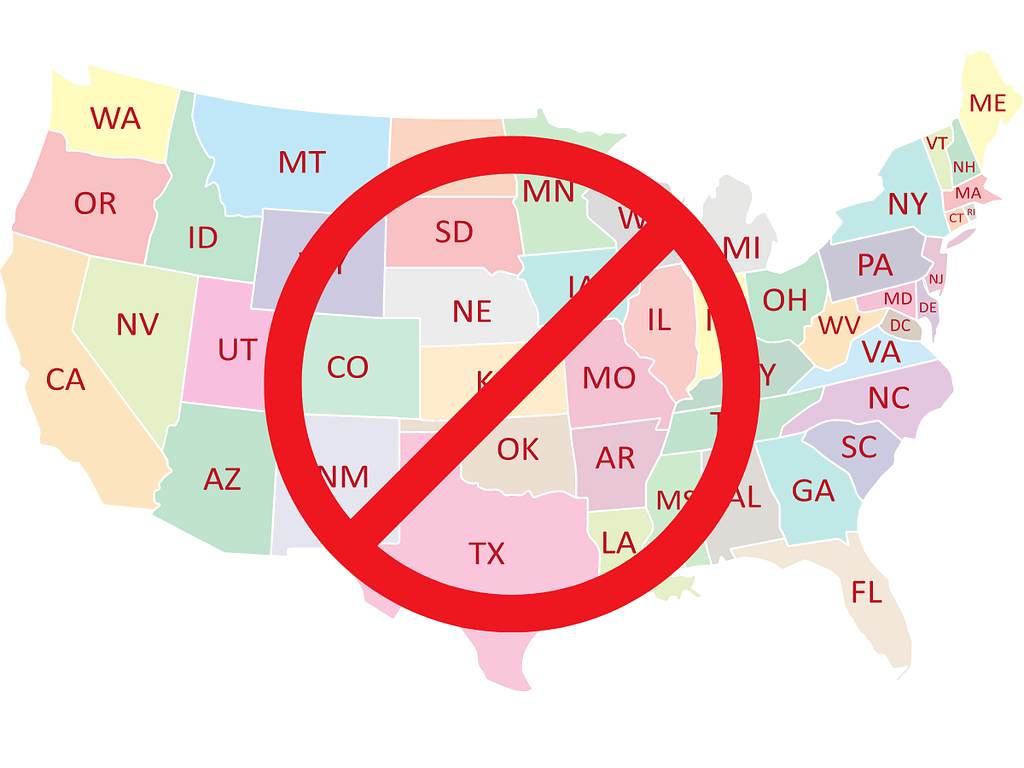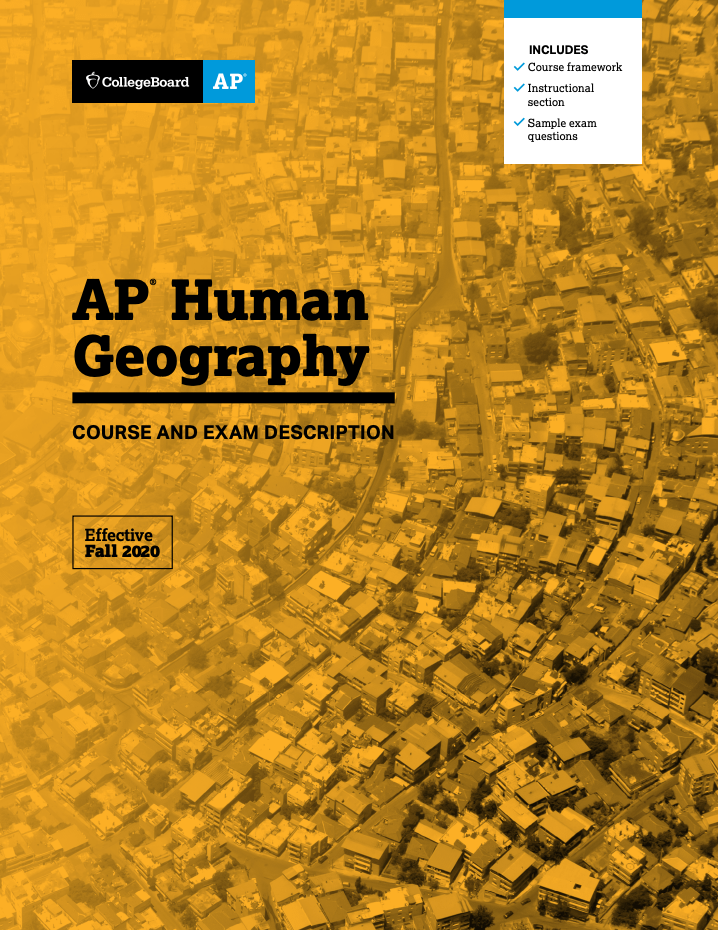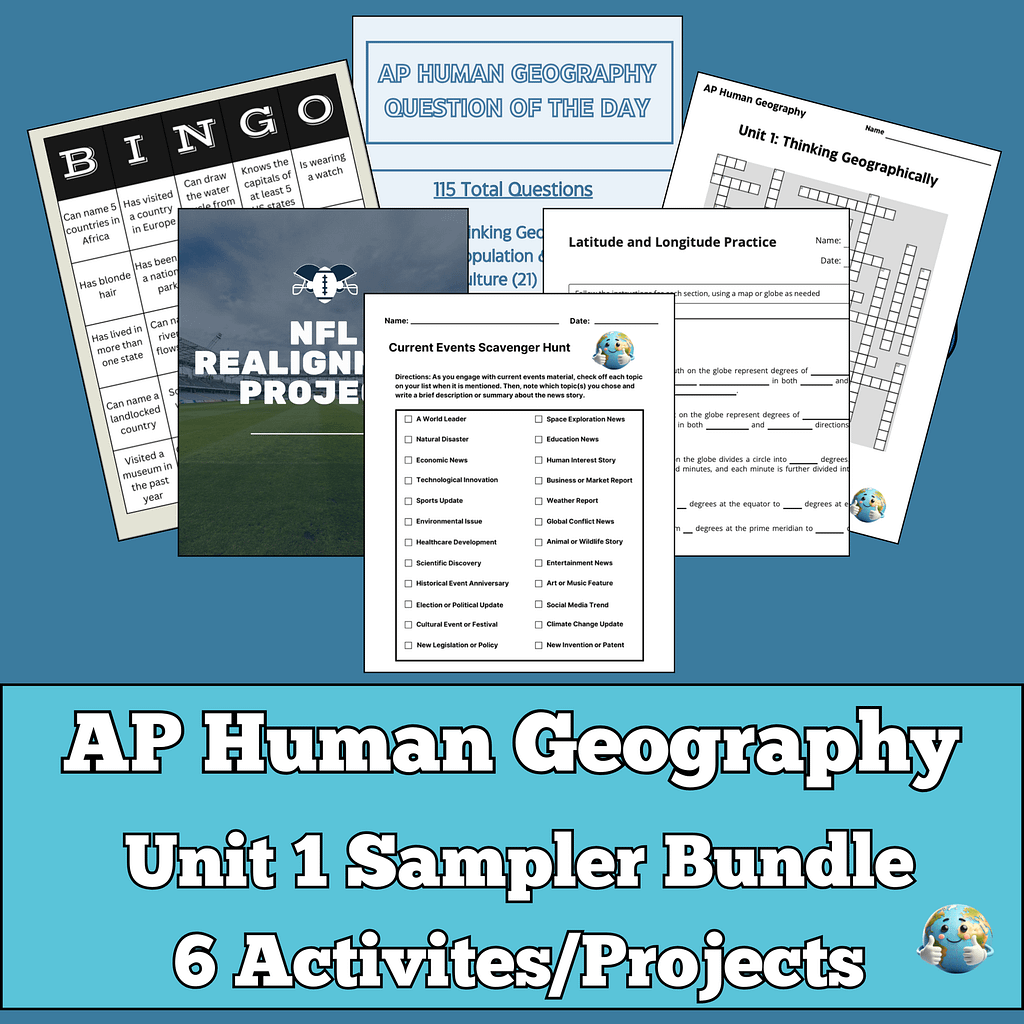So… you’ve just been told you’re teaching AP Human Geography this year.
Maybe it came with a smile and a “You’ll do great!”
Maybe it came with zero resources, no pacing guide, and a textbook that looks like it time-traveled from 2003.
And now you’re staring at Unit 1, trying to figure out what on earth “spatial thinking” means — and how to teach it to freshmen who just learned where their classes are.
I’ve been there. I was you.
That was 15 years ago. Since then, I’ve taught AP Human Geography in just about every way possible — with new textbooks, old standards, no tech, all tech, and everything in between.
Here’s what I wish someone had told me before I tried to turn a glossary full of geography terms into something students could actually understand — and maybe even enjoy.
1. The Course Isn’t About Places — It’s About Patterns


The most common question I get about this course is:
What even is AP Human Geography?
Closely followed by: How is this different from World Geography?
Here’s the short version:
World Geography is about places. AP Human Geography is about patterns.
You’re not teaching students to label maps. You’re teaching them to notice trends. Ask better questions. Think about how humans interact with space and each other.
This isn’t a map quiz class. It’s a way-of-seeing-the-world class. Once you make that mental shift, everything else starts falling into place.
2. AP Human Geography Is Its Own Language
This course comes with a lot of academic-sounding vocab: site, situation, formal region, scale, diffusion. It’s overwhelming at first, for you and your students.
But the trick isn’t teaching the words — it’s teaching the ideas behind them.
Don’t just define terms. Use stories, maps, memes, anything that helps make it click. Think less “let’s memorize,” more “let’s make sense of the world.”
3. You Need a Pacing Guide
Start with the College Board’s Course and Exam Description. It breaks the course into seven units and shows what’s tested — and how often.
Some units are longer. Some are lighter. Plan accordingly. And whatever you do, don’t let Unit 1 drag on until Halloween.
Leave time in April for review and practice FRQs. Future You will be very grateful.

4. This Class Is About Way More Than Passing the Exam
AP Human Geography isn’t just test prep. It’s a chance to help students see the world differently — and think critically about their place in it.
Use current events to make abstract ideas real. Show how everything — migration, culture, urbanization, population — connects back to human behavior.
Here’s the secret: there’s almost nothing in the news, in life, or on TikTok that’s “off topic” in Human Geo. It all connects. That’s what makes the course so powerful — and so much fun to teach.
Even more important? Use this course to help students grow in their appreciation of cultures that don’t look like their own.
One teacher once told me their goal was to help students become “culturally literate global citizens.” That phrase stuck with me.
If your students walk out of your class more empathetic, more curious, and more willing to ask why things are the way they are — you’ve done your job.
Yes, passing the national exam matters. But so does perspective. And you have the chance to give them both.
5. Don’t Try to Build Everything from Scratch — You’re Not Alone
One of the biggest mistakes new AP Human Geo teachers make? Trying to do it all solo.
Sure, you could build your own lessons, vocab tools, assessments, and pacing guides from the ground up — but unless you have a clone and a time machine, it’s not worth it.
There are teacher communities out there, and they can be helpful. Facebook groups, subreddits, message boards — places where you can find ideas, ask questions, and realize that no, you’re not the only one who just learned what a centripetal force is.
But if you’re reading this, you’ve already found something better.
I’ve taught AP Human Geography for 15 years. I’ve done the trial and error. I’ve built the scaffolds, refined the activities, and figured out what actually works — not just what looks good on Pinterest.
And I’m giving you some of it for free.
I put together a Unit 1 activity bundle filled with ready-to-go resources: lessons that make abstract concepts actually stick. These are classroom-tested, student-approved, and first-year-teacher-friendly.
Start with that. Save yourself the trouble!
👉 Grab your free Unit 1 starter kit — no stress, just ready-to-use resources.

You don’t need to have all the answers right away. Remember, it doesn’t have to be perfect!
One step at a time. One student at a time. You’ve got this.


3 Responses
[…] to AP Human Geography? Check out the first post in this series: AP Human Geography Made Simple: A Beginner’s Guide. It’s packed with tips for wrapping your head around the course itself — including what it […]
[…] for students—or just figuring out how to get started yourself—check out our companion post: AP Human Geography Made Simple: A Beginner’s Guide. It’s packed with tips, topic breakdowns, and classroom-friendly language to help you feel […]
[…] brand new to APHG and feeling overwhelmed by the scope of this course, definitely check out my complete beginner’s guide for new teachers first. It’ll give you the foundation you need to both get started, and finish […]